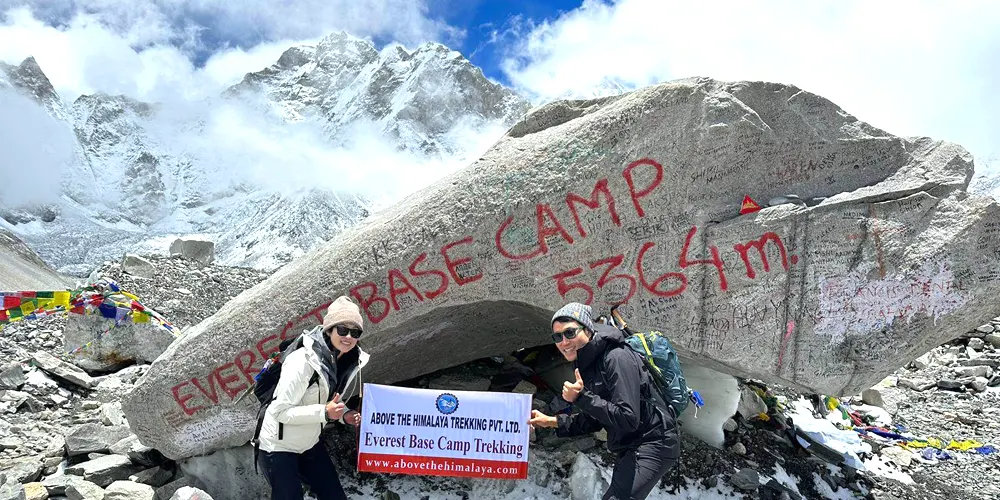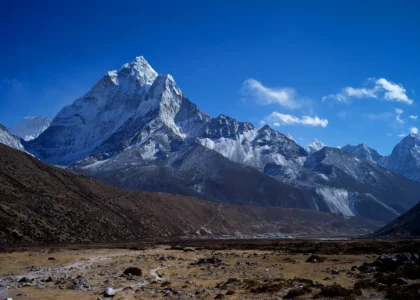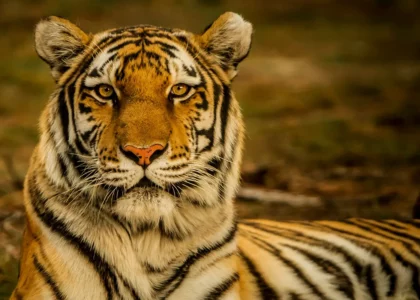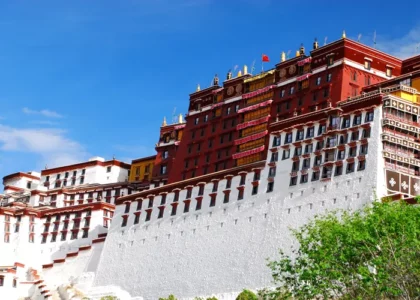How Long is the Everest Base Camp Trek? Duration, Route Options & FAQs

Everest Base Camp is widely regarded as the best trekking destination; thus, it is important to know how long the Everest Base Camp trek is. Depending on your pace and the chosen itinerary, the Everest Base Camp trek can be completed in 12 to 14 days. This trek begins at Tribhuvan International Airport or Ramechhap Airport, which begins with a flight to Lukla.
The trek covers 130 kilometers and passes through villages like Phakding, Namche, and Dingboche. You will then walk for about 9 days to reach Base camp and between 3 to 5 days to return to Lukla. This itinerary will cover the acclimatization days, which make the trek enjoyable and safe.

The Everest region draws a huge number of trekkers each year with its beautiful Himalayan views and Sherpa culture. For trekkers, it is important to know how long the Everest Base Camp trek is for smooth planning and preparations. If you are aware of how long the Everest Base Camp trek is, then you can properly allocate time for acclimatization, which adds safety factors to your trek.
However, several routes affect your days of travel. The most well-known route to reach the base camp is from Lukla, which will take you 12 to 14 days. If you want longer routes, then they are also available. Jiri to Everest Base Camp trek and Gokyo to Everest Base Camp trek routes are longer routes, which will take 19 to 22 days to complete. These routes will offer you extra scenery and less foot traffic on the trail.
Knowing how long the Everest Base Camp trek takes will help you prepare both physically and mentally. It also ensures you have enough days for acclimatization to reduce the risk of developing altitude sickness and make the trek challenging and worthwhile.
How Long is the Everest Base Camp Trek?
The standard route to Everest Base Camp will take you 12 to 14 days. This time frame will involve the acclimatization days for rest. This itinerary allows you to have a safe pace and make sure that you are walking in a way that is fun at high altitude.
The Everest Base Camp journey is around 130 to 140 kilometers long round-trip. After reaching the trek starts again in base camp and ends at Lukla, a mountain town that is only reachable by flight from Kathmandu. Each day, you will be walking for about 9 kilometers, which roughly involves 5 to 7 hours of walking.
The journey from Lukla to Base Camp takes 9 days. This allows your legs to rest and adapt as you gradually gain altitude because acclimatization stops at places like Namche Bazaar and Dingboche. However, the return trek is easier and can be completed in 3 to 5 days.
There are also several routes to reach Everest Base Camp: Jiri to EBC and Gokyo to EBC. These are longer routes, containing 19 to 22 days, and allow you to have more rest. However, the classical Everest Base Camp route starts in Lukla and is for those who want to know how long is Everest Base Camp trek is, where the majority of trekkers will flock.
Different Duration Options for the EBC Trek
Most often, trekkers will take a 14-day standard Everest Base Camp trek. The trip generally starts with a flight from Kathmandu to Lukla and then a trek to Everest Base Camp while acclimatizing at Namche Bazaar and Dingboche. The itinerary accommodates enough trekking time and acclimatization to minimize risks to safety and enjoyment.
A shorter version of the trek is also available in a 12-day format with the option of making an aerial helicopter return to Lukla. Thus cutting the time down of the trek, especially for the descent; great for trekkers who are limited in schedule but still want to get the full classic route to Everest Base Camp.
For a shorter trek, a still efficient 10 to 11-day trek could be possible, but this itinerary reduces acclimatization days and increases trekking distance each day. However, with an increased speed in trek, the risk of altitude sickness will also increase with regard to overall health, fitness, and expedition trekking experience.
Additional length on the expedition, such as an inclusion of visiting Gokyo Lakes and possibly the Three Passes, can easily add 5 to 8 days of extra duration of distance walking. The trek can be anywhere from 19 to 22 days, depending on the path. These trails add fantastic additional scenery, but also offer less congested paths to trek and explore for the more adventurous trekker.
Factors Affecting Trek Duration
Acclimatization needs
The length of the Everest Base Camp trip is influenced by acclimatization requirements. It is important to spend extra time on the trail to deal the altitude sickness and thereby you can lower the altitude sickness. Proper acclimatization will increase the overall duration of the trek but add safety and success at the same time.
Physical fitness
Physical fitness also has a significant impact on how long the Everest Base Camp trek lasts for each individual. You will be able to travel longer distances if you are physically fit. If you are less fit, then you need more resting days and have slow pacing, which would lengthen the trek.
Altitude and elevation gain
The significant altitude and elevation gain on the route will also directly impact how long is Everest Base Camp trek is. The trek from Lukla starts at around 2,800 meters and goes up to 5,364 meters at the base camp. This requires acclimatization days and a gradual ascent, which adds to the trek duration, but is necessary for health.
Weather and trail conditions
Weather also needs to be taken into account, as well as the trail conditions, to help predict how long is Everest Base Camp trek . Going in the monsoon or winter months creates slick and/or snowy trails, which can both slow trekker progression and require a few extra rest or contingency days. However, spring and autumn provide the most stable weather conditions, allowing trekkers to make a smoother and faster trek.
Optional side trips or rest days
Finally, optional side trips or rest days will ultimately dictate how long is Everest Base Camp trek is. Many trekkers will have side trips to Gokyo Lakes or the Three Passes, which can lengthen the trek by another week. Others may add extra rest days to recuperate or take in the scenery, add time to the trek itinerary, but also give you extra time to enrich your experience.
Daily Walking Hours and Distance
You will cover 12 to 15 kilometers each day on the Everest Base Camp Trek. However, the total trekking distance to EBC is 130 kilometers. To cover this distance, you will need a steady pace, allowing rest and acclimatization on the route.
Trekkers will walk each day from 5 to 7 hours, depending on the terrain and altitude. In the early days of trekking, it was easier with shorter hikes, while in high-altitude treks, trekkers will need to slow down and put in more walking hours due to the altitude and difficulty of the paths.
The distance between the checkpoints: Lukla to Phakding is about 8 to 9 km and it will take you 3 to 4 hours, from Phakding to Namche Bazaar is 12 km and it will take you 5 to 6 hours, and from Namche to Tengboche is 10 to 11 km which will take 5 to 6 hours.
The longest walking hour is in the day trek from Lobuche to Everest Base Camp and from Everest Base Camp back to Gorak Shep, which will cover approximately 15 kilometers.
On the way back, there will be longer distances up to 19-20 km from Namche Bazaar to Lukla. Being downhill will be faster and easier as well, and allow trekkers to go further distances in a day. Planning is important to ensure safe acclimatization and steady progress to Everest Base Camp.
Best Seasons for Optimal Trek Duration
The seasons of March through May and September through November are the best periods to hike to Everest Base Camp. These months offer moderate weather, clear skies, and great visibility of the mountains, so the conditions are perfect for trekking, and you tend to move freely without delay for the bulk of the trek.
Spring is especially busy due to all the rhododendrons in bloom and the climbers that are working their way up Everest. The autumn is usually now dry, stable weather with crisp air, and a lot fewer people. Spring and autumn also both contribute toward a more level pace, which helps to minimize weather problems.
Winter and monsoon seasons Everest Base Camp trek is very different. The monsoon (June to August) brings heavy rains, slippery trails, and terrible visibility, and can cause delays. Winter (December to February) is cold, but there are many fewer trekkers with clear skies and much less foot traffic on the trails. The only downside is that when it is cold in the winter, it can reduce your speed and therefore increase the time it takes to complete the trek.
Helicopter Return Option
In the helicopter return trip, you will return to Kathmandu or Lukla by helicopter from Everest Base Camp. This helicopter option minimizes, by 2 to 4 days, the length of the descent and is well-suited for trekkers who are asking how long is Everest Base Camp tour is based on these time constraints.
Taking a helicopter back from Everest Base Camp limits the impact of the long downhill hike and offers good views of Everest and the surrounding mountains from the air.
But trekking back from Everest Base Camp with a helicopter return also comes with additional costs and potential weather delays and uncertainty. For trekkers asking how long is Everest Base Camp tour is, a helicopter return merges adventure, convenience, and comfort.
Why Not to Rush the Trek
Trekking itineraries with fewer acclimatization days will increase the risk of altitude sickness, a condition that is more common at higher elevations. The attitude sickness symptoms consist of headaches, nausea, and fatigue. Understanding how long is Everest Base Camp trek is and pacing yourself with rest days is important for safety.
Proper acclimatization at higher elevations allows your body to adjust to the lower oxygen level and reduces the likelihood of altitude sickness. This slow approach provides a unique opportunity to appreciate the beautiful scenery and cultural experience, rather than worrying about how long is Everest Base Camp trek.
Trek Preparation Tips Based on Duration
- Prepare for how long is Everest Base Camp trek by training for endurance and strength.
- Pack layered clothing, solid boots, and essentials for your longest treks.
- Build your legs and core to be able to manage daily distances of 12 – 15 km.
- Begin to arrange for travel insurance to cover emergencies such as medical emergencies and helicopter evacuations.
- If there is an emergency, have an action plan, including communication means and medical information.
Cost Considerations Based on Trek Length
The price of accommodation and food for the Everest Base Camp trek is $10 – $25 a night for teahouses and $5 – $10 a meal, which can total $320 – $700 for an average 12 – 14 day trek. If you trek for longer, these costs increase proportionally.
Permits cost $40 – $50. For each day you use a guide and/or a porter, expect to pay $20 – $40 per day. If you return via helicopter, add $300 – $1,500 per person. A helicopter return is much more expensive than trekking back, but it will save you 2 – 4 days in trek time and is easier on the body.
Frequently Asked Questions (FAQs)
How long is the Everest Base Camp trek in kilometers?
The Everest Base Camp trek is approximately 130 km in length (return trip), starting from Lukla to base camp and back to Lukla.
How many days does the standard EBC trek take?
The average Everest Base Camp trek is done in 12 – 14 days, including acclimatization and rest days.
Can I finish the EBC trek in 10 days?
It is possible to finish the EBC trek in 10 days, but not recommended, due to the risk of altitude sickness and not having adequate time to acclimatize.
Is there a helicopter return option for the EBC trek?
Yes, there is a helicopter option, from Gorak Shep or other points nearby, back down to Lukla, cutting several days off the descent.
How many hours do you walk per day during the trek?
Trekkers typically can walk between 5 – 7 hours, covering between 12 – 15 km a day while on the trek in even terrain.
What is the hardest day on the EBC trek?
The hardest day will usually be from Lobuche to Everest Base Camp and back again to Gorak Shep, and will in most cases be the day that you spent the longest at altitude.
Is 14 days enough for proper acclimatization?
14 days is typically adequate time, with the acclimatization days at Namche Bazaar and Dingboche for that exposure.
Do I need rest or acclimatization days on the trek?
Yes, you need an additional day’s rest and acclimatization to reduce the risk of altitude sickness and improve the safety of the trek.
Can beginners complete the Everest Base Camp trek?
Yes, beginners with a basic level of fitness and correct preparation can complete the Everest Base Camp trek, as you do not require technical climbing skills.
What happens if I get sick or tired during the trek?
If you feel bad or get sick, call for help from any guides or porters, as there is a medical evacuation by helicopter during an emergency.
How long is the Lukla flight from Kathmandu?
The flight time from Kathmandu to Lukla is about 30-40 minutes, and the views of the mountains whilst flying are incredible.
What altitude is Everest Base Camp located at?
Everest Base Camp is an elevation of about 5,364 meters (17,598 feet) above sea level.
What is the best time to do the EBC trek in terms of duration?
The ideal time for the best trek time frame is spring (March-May) and autumn (September-November) when conditions are more stable.
Can I hire a guide or porter for a shorter trek?
Yes, you can hire a guide or porter for shorter treks or for full Everest Base Camp treks to assist you.
Is the trek route a loop or a round trip?
The trek is a round trip, from Lukla to Lukla; it is not a loop.
Is there an age limit for trekking to EBC?
There is no moderation age; however, trekkers should be fit and accustomed to high-altitude trekking.
Can I combine EBC with Gokyo Lakes or other treks?
Yes, Everest Base Camp can be successfully done with Gokyo Lakes and Three Passes treks.
Best Price Guaranteed, Easy to change Date, Instant Confirmation
Book This Trip Have Questions?
Have Questions?Talk to Expert
Meet Mr. Purushotam Timalsena (Puru), Nepal's best trek and tour organizer, who has been working in the Himalayas for more than 24 years.
WhatsApp/Viber +977 98510 95 800











